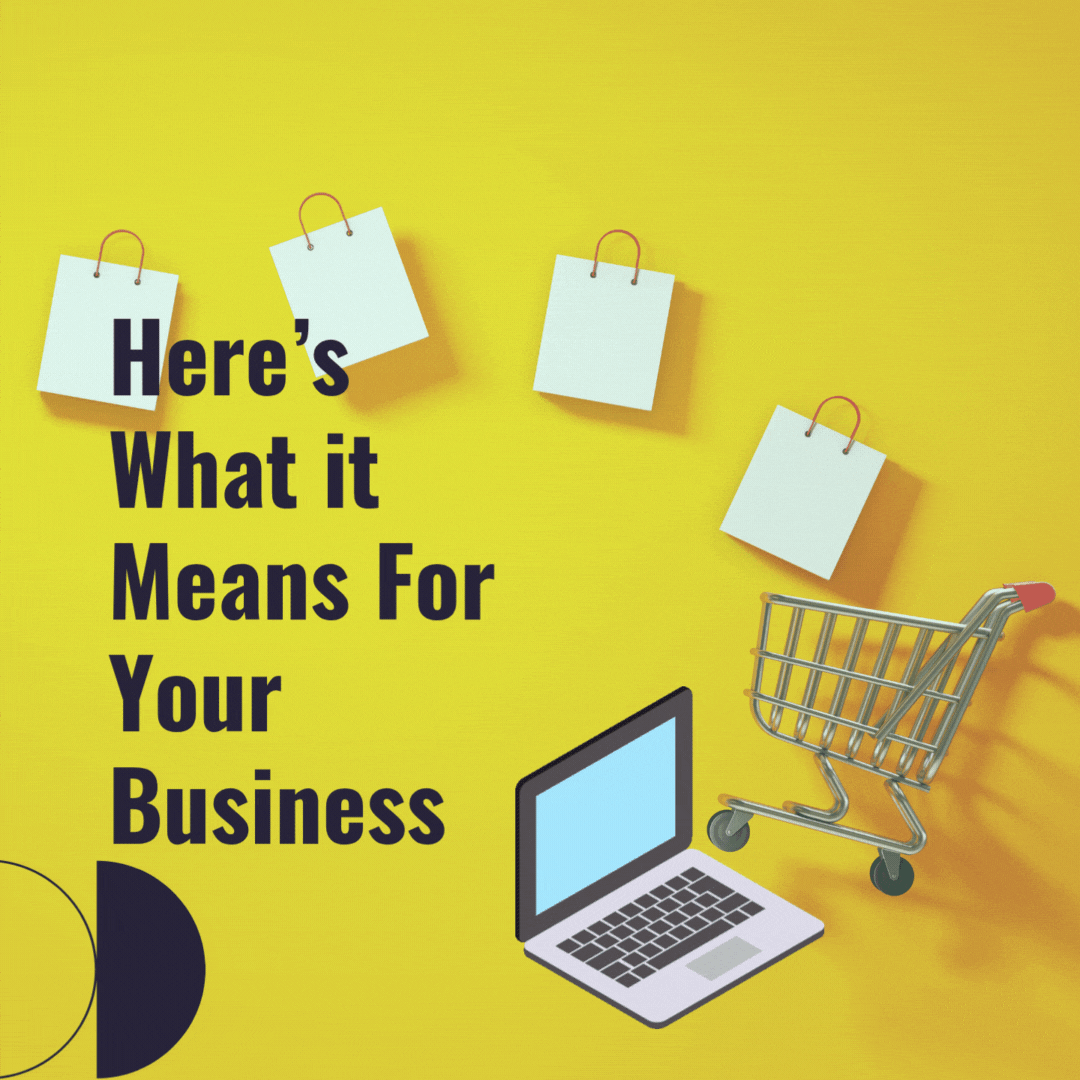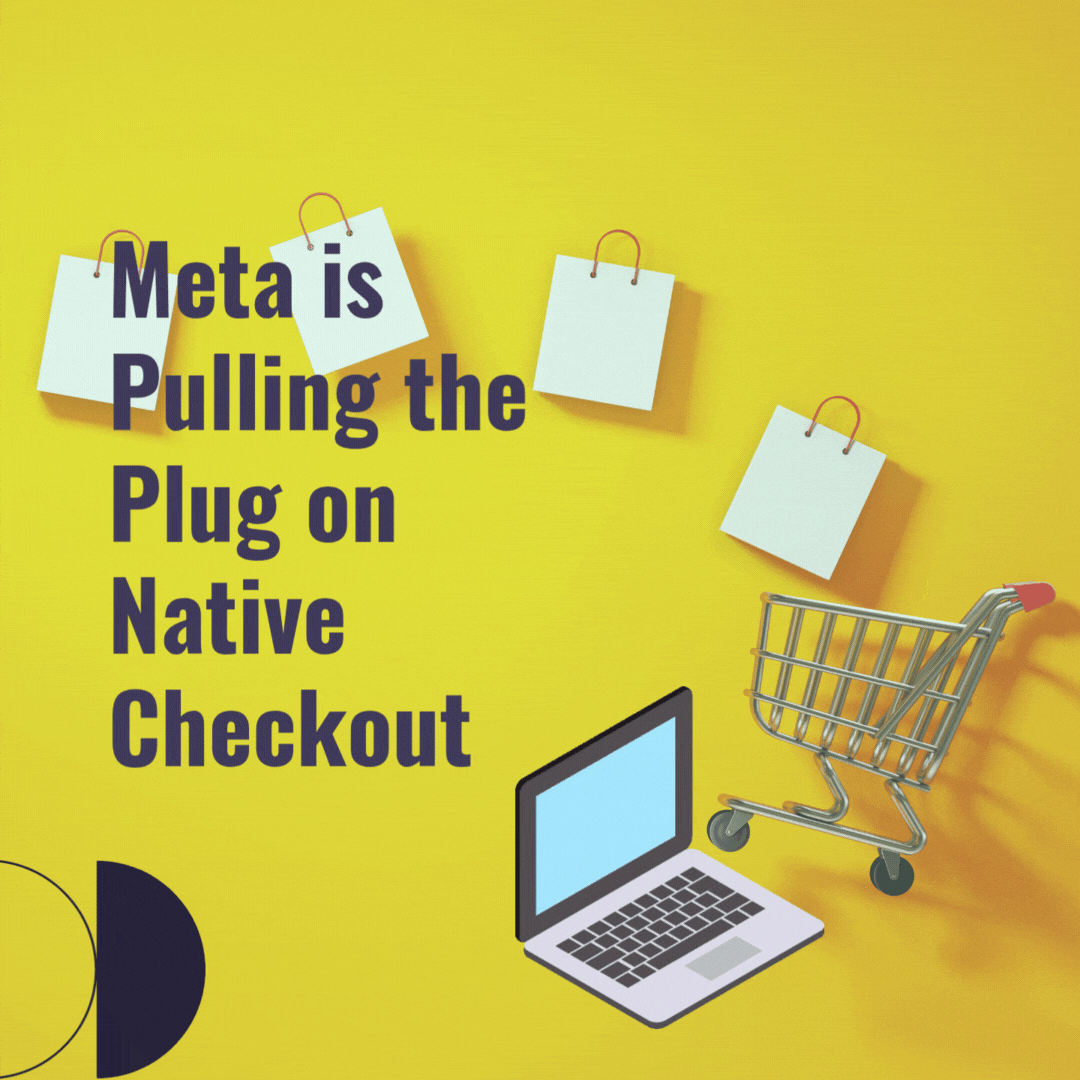Meta is Pulling the Plug on Native Checkout
TL;DR
Meta is ending in-app checkout on Facebook and Instagram by August 2025, meaning all purchases will now happen on your own website.
Big shifts are coming to how people shop on Facebook and Instagram — and if you’ve been running your business through Meta Shops, this one’s for you.
Starting June 2025, Meta will officially end native checkout, meaning customers will no longer be able to complete purchases directly inside Facebook or Instagram. Instead, they’ll click through to your website to finish checkout.
Translation? You’re about to get your customers back.
But it also means you’ll need to make sure your e-commerce setup is ready to handle the extra traffic, orders, and tracking that used to live inside Meta.
“By August 2025, all Facebook and Instagram Shops will finish migrating to external checkout. Your products will still show up in Shops — but the moment someone taps “Buy,” they’ll be redirected to your website to complete the purchase.”
What’s Changing (and When)
By August 2025, all Facebook and Instagram Shops will finish migrating to external checkout. Your products will still show up in Shops — but the moment someone taps “Buy,” they’ll be redirected to your website to complete the purchase.
It’s a full reversal of Meta’s 2023 rule that forced businesses to use in-app checkout. Two years later, Meta’s decided they’re not in the ecommerce game after all — they’re back to being the discovery engine, not the store.
Why Meta’s Making the Change
Meta hasn’t dropped a detailed explainer, but the writing’s on the wall:
Ecommerce is messy. Running checkout means handling payments, taxes, refunds, returns, and customer support. That’s a lot of overhead for a company built to sell ads, not manage shipping labels.
Regulators are watching. Pulling back from transactions helps Meta look less like a marketplace monopoly and more like an ad platform.
The math wasn’t mathing. Even with billions of users, in-app checkout likely wasn’t as profitable as simply selling ad space that drives traffic to your site.
In short: it’s cleaner, cheaper, and safer for Meta to focus on what they do best — advertising — and let business owners like you own the sale.
What It Means for You
If you’ve been relying on native checkout, you’ll see major shifts in how you manage orders, payments, and ads.
No more Meta payouts. You’ll handle payments directly through your ecommerce platform.
No order management in Commerce Manager. Fulfillment, refunds, and returns all happen in your own system.
Customer communication moves. Order-related messages will need to happen through your website or DMs (Messenger/Instagram Direct).
In other words, your website just became mission-critical.
Your Prep Checklist
Here’s what to do now to stay ahead of the curve:
Optimize your website checkout.
Add guest checkout, trust badges, and express pay options.
Update your shipping + returns.
All logistics now run through you — make your policies clear and visible.
Tighten your ad strategy.
Since users will need an extra click to purchase, your creative needs to build more trust and urgency upfront.
The Bigger Picture: What This Says About Social Commerce
Meta’s pivot is a reminder that social platforms can change their minds fast.
This is your cue to stop building your business on social media and start using social for your business.
Own your customer data. Own your checkout. Own your future.
Because when the next platform update happens (and it will), you’ll already be ready to pivot confidently.

















